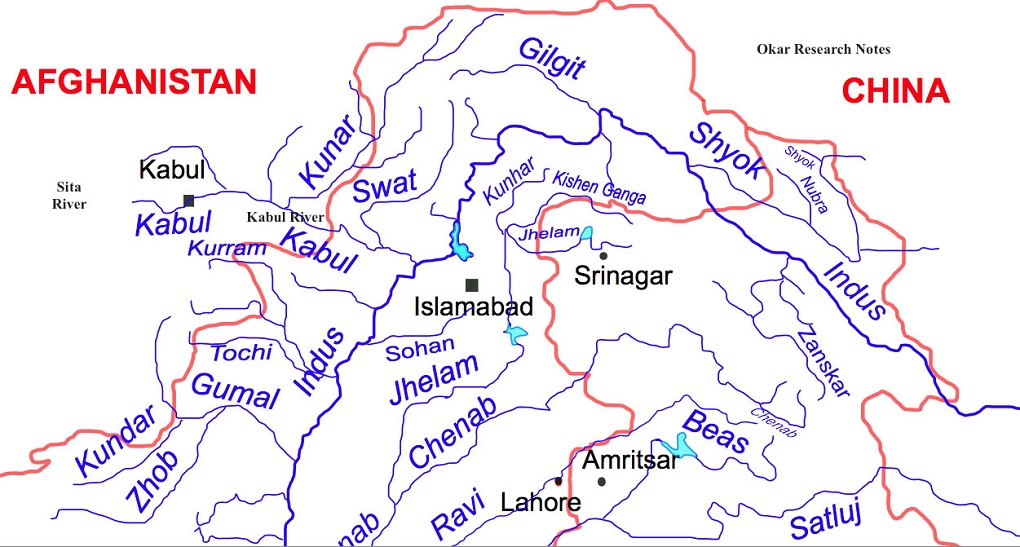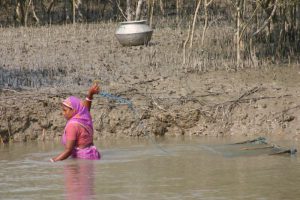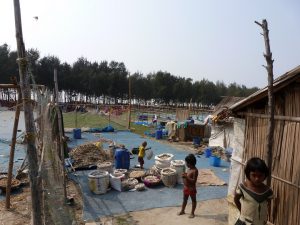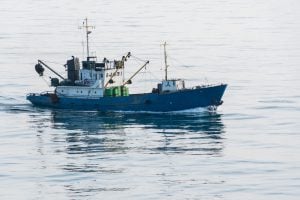Pakistani officials and experts have, time and again, suggested the negotiation of an Afghanistan-Pakistan treaty to regulate the sharing of the Kabul River Basin (KRB). These calls have, however, not been reciprocated by Afghanistan. Given the looming water crisis in Pakistan and Afghanistan’s plans to utilise its water assets to meet the water, food, and energy needs of its impoverished and rapidly growing population, it seems pertinent to examine the subject.
Where is Kabul River?
The Kabul River rises in the Hindu Kush, receives substantial flows from the Kunar and several minor rivers originating in Pakistan’s Chitral region, flows east past Kabul and Jalalabad before entering Pakistan. In Pakistan, the Kabul river is augmented by the Swat river and its tributaries before it drains into the Indus at Attock.

Kabul River in Afghanistan
Afghanistan’s fresh water assets supplied by its five river basins are considerable. In 2012 the annual per capita availability of total renewable water in Afghanistan was 2,190 cubic metres; for Pakistan, the number was 1,378, far lower than the world average. Since then, a booming population and extraction of water have led to experts suggesting that Pakistan’s current per capita water availability may be down to 1,000 cubic metres.
The Kabul River contributes a fourth of Afghanistan’s freshwater. More importantly, five million residents of Kabul and Jalalabad depend on it for all their water needs. Afghanistan suffers from a severe shortage of electricity; only 28% of Afghan households are connected to power supply systems. Dams built during 1950-1970 and rehabilitated recently produce less than 300 megawatts of electricity. Afghanistan imports 80% of its electricity from its central Asian neighbours. Kabul has completed feasibility studies of more than 20 small and medium sized hydropower projects including a dozen dams in the Kabul Basin but has not been able to secure the large funds needed for building them. The prospects for funding are predicated on the restoration of peace and security.
See: Afghanistan’s water sharing puzzle
Four-fifths of Afghanistan’s population of 34 million depend on farming and horticulture. Conflict and insecurity coupled with a decade long drought have badly damaged the sector, reducing the cultivated area from 10.8 million acres in 1978 to 4.6 million acres in 2002. Despite Afghanistan’s huge but undeveloped mineral resources worth at least USD 1 trillion, agriculture remains the mainstay of its economy, exports, food security and livelihoods in rural areas.
Kabul River in Pakistan
In Pakistan, the Kabul River and its tributaries are indispensable for meeting the drinking water and sanitation needs of the more than two million residents of Peshawar city, irrigation in the small but fertile Peshawar Valley and the sub- regions of Tank, D.I.Khan, Banuri and North Waziristan. The Kabul river supports the 250 MW hydropower dam in Warsak built in 1960 and subsequently enlarged producing additional amounts of electricity. Crucially the Kabul and its tributaries augment the flows of the Indus at Attock by between 20 and 28 million acre feet (MAF); the variation depending on climatic factors, especially recurring droughts in Afghanistan.
![The Naghlu hydropower dam supplies electricity to Kabul [image by Qaseem Naimi / ICIMOD]](/wp-content/uploads/2017/03/Naghlu-Dam-hydropower-Kabul-Qaseem-Naimi-ICIMOD.jpg)
Viewed against this backdrop, the suggestions for a water sharing treaty with Afghanistan are primarily aimed at ensuring uninterrupted supply of the flows of the Kabul and its tributaries. Unfortunately, Islamabad has neither articulated a formal position nor done any serious work on the rationale and elements of a bilateral water sharing agreement. However, the IUCN, the World Conservation Union and the Peshawar-based Regional Institute of Policy Research and Training (RIPORT) have produced excellent studies on the subject.
Fearmongering in the Pakistani press
Meanwhile, Pakistani newspapers frequently predict an imminent drastic reduction in the flows of the Kabul resulting from diversion of water for multi-purpose projects for power generation, storage, and irrigation in the Kabul Basin. These reports claim, without citing any evidence, that India has supported preparation of proposals for a dozen multi-purpose projects and promised funding for them. Some newspapers have even speculated that the World Bank might finance the multi-purpose water projects in the Kabul Basin.
Pakistani media’s speculations over multi- purpose projects in the Kabul Basin are unwarranted. Neither the World Bank nor India or any other third country is likely to support a project in this transboundary basin which will adversely affect Pakistan’s rights as a lower riparian. The World Bank has drawn up guidelines prohibiting the funding of projects which might cause “significant harm” to a co-riparian of a transboundary river basin, based on the international legal framework prescribed by the 1997 UN Watercourses Convention and the Berlin Rules agreed in 2004.
See: UN Watercourses Convention is good for South Asia
Kabul Basin Treaty
The only time Afghanistan and Pakistan discussed water issues was during the August 2013 visit of the then Afghan Finance Minister Hazrat Omar Zakhilwal, currently Kabul’s ambassador to Pakistan. According to media reports, the two countries had agreed to jointly build and manage a large, 1200-1500 MW hydropower project on the Kunar River. But there has evidently been no follow up.
The technical committees established by the Pakistani government in 2003 and 2005 to draft a water treaty with Afghanistan did not make any headway due to lack of data on the flows of rivers in the Kabul Basin. The World Bank had reportedly indicated a positive response to a joint request by Islamabad and Kabul. More recently, it convened informal consultations between water experts of the two countries in Abu Dhabi, the outcome of which is unclear. Given its enormous expertise accumulated in promoting cooperative management of transboundary river basins in different parts of the world, the World Bank is uniquely qualified to assist Afghanistan and Pakistan in negotiating a Kabul Basin Treaty.
Benefits of cooperation
Cooperation in utilising the Kabul Basin waters would benefit both countries. Their water woes are likely to be exacerbated by the impacts of climate change such as frequent, longer, and intense extreme weather events like floods, droughts, heat waves, storms and rising temperatures which increase demand for water while reducing supply. The areas of mutually beneficial cooperation include hydropower generation, building and management of dams and storage, water infrastructure, data collection and collation, and adaptation to the adverse effects of climate change.
The negotiation of a water treaty between Afghanistan and Pakistan would not be easy in view of widespread doubts among Afghans about the sincerity of its neighbours. These apprehensions have grown due to the unsatisfactory implementation of the 1973 treaty with Iran on the Helmand Basin and pervasive hostility toward Pakistan whom Afghans accuse of scuttling their efforts to secure funds for water resources development.
Pending formal negotiations on a possible treaty on the Kabul Basin, governments of the two countries, with the assistance of the World Bank, need to initiate consultations between their officials and civil society representatives to identify the areas of cooperation on the prudent stewardship of the shared freshwater resources.
![<p>The Kabul river flowing past Jalalabad [image by Peretz Partensky]</p>](https://dialogue.earth/content/uploads/2017/03/Kabul-river.jpg)








